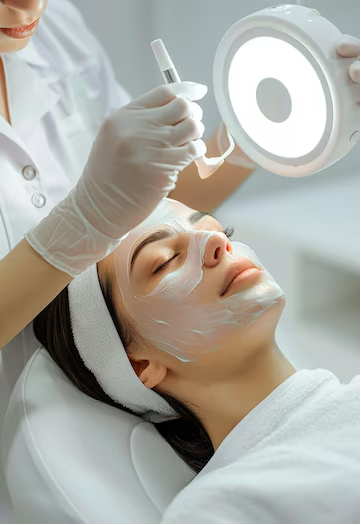
Marionette lines, the vertical wrinkles that extend from the corners of the mouth down to the chin, can be a significant concern for many as they age. These lines can give the face a downturned, unhappy appearance, even when you’re not frowning. Fortunately, dermal fillers offer an effective solution for softening these lines and restoring a youthful, cheerful look. This comprehensive guide explores everything you need to know about filler for marionette lines, including the types of fillers available, the procedure, and tips for achieving the best results.
Understanding Marionette Lines
What are Marionette Lines?
Marionette lines are the creases that run from the corners of the mouth down to the chin. They are named after the string puppets, marionettes, which have similar lines to allow the lower part of the face to move. These lines become more pronounced as we age due to the natural loss of skin elasticity, fat, and collagen.
Causes of Marionette Lines
Several factors contribute to the development of marionette lines, including:
- Aging: As we age, the skin loses its elasticity and collagen, causing it to sag and form wrinkles.
- Sun Exposure: UV rays can accelerate the breakdown of collagen and elastin, leading to premature aging.
- Genetics: Some people are genetically predisposed to develop marionette lines earlier in life.
- Facial Expressions: Repeated facial movements, such as smiling and frowning, can deepen these lines over time.
Types of Dermal Fillers for Marionette Lines
Hyaluronic Acid Fillers
Hyaluronic acid (HA) fillers are among the most popular options for treating marionette lines. HA is a naturally occurring substance in the skin that helps retain moisture and add volume. Common HA fillers include Juvederm, Restylane, and Belotero. These fillers are known for their ability to provide natural-looking results and their relatively low risk of adverse reactions.
Calcium Hydroxylapatite Fillers
Calcium hydroxylapatite (CaHA) fillers, such as Radiesse, are another option for treating marionette lines. CaHA is a mineral-like compound found naturally in human bones. These fillers provide immediate volume and also stimulate collagen production, leading to longer-lasting results. CaHA fillers are typically used for deeper lines and can provide more structural support than HA fillers.
Poly-L-lactic Acid Fillers
Poly-L-lactic acid (PLLA) fillers, like Sculptra, work differently from other fillers. Instead of providing immediate volume, they stimulate the body’s natural collagen production over time. This process results in a gradual and natural-looking improvement in marionette lines. PLLA fillers are ideal for those seeking long-term results, as the effects can last up to two years or more with proper maintenance.
Polymethylmethacrylate Fillers
Polymethylmethacrylate (PMMA) fillers, such as Bellafill, offer a more permanent solution for marionette lines. PMMA fillers contain tiny microspheres that provide a scaffold for collagen production, leading to long-lasting volume and wrinkle reduction. While the results are durable, it’s essential to choose a highly experienced practitioner, as these fillers are not easily reversible.
The Filler Procedure for Marionette Lines
Consultation and Assessment
The first step in the filler treatment process is a thorough consultation with a qualified practitioner. During this consultation, the practitioner will assess your facial anatomy, discuss your aesthetic goals, and determine the most appropriate type of filler for your needs. This is also an opportunity for you to ask questions and address any concerns you may have.
Preparation
Before the procedure, your practitioner will clean the treatment area and may apply a topical numbing cream to minimize discomfort. It’s important to avoid alcohol and certain medications, such as blood thinners, for a few days before the treatment to reduce the risk of bruising.
Injection Process
The filler injections themselves are relatively quick, usually taking about 15-30 minutes. The practitioner will use a fine needle or cannula to inject the filler into the targeted areas. You may feel a slight pinch or pressure during the injections, but the procedure is generally well-tolerated.
Post-Treatment Care
After the injections, you may experience some redness, swelling, or bruising at the injection sites. These side effects are typically mild and resolve within a few days. Your practitioner will provide specific aftercare instructions, such as avoiding strenuous exercise, excessive heat, and alcohol for 24-48 hours after the treatment.
Results and Maintenance
When to Expect Results
The results of HA and CaHA fillers are usually visible immediately after the treatment, with full effects becoming more apparent after any swelling subsides. PLLA fillers, on the other hand, require multiple sessions and several weeks or months for the collagen-stimulating effects to develop fully.
Duration of Results
The longevity of filler results varies depending on the type of filler used. HA fillers typically last between 6-12 months, CaHA fillers can last up to 12-18 months, and PLLA fillers can provide results for up to two years or more. PMMA fillers offer the most extended duration, with results lasting five years or longer.
Scheduling Follow-Up Appointments
Regular follow-up appointments are essential for maintaining the desired results. Your practitioner will assess your progress and recommend when to schedule your next treatment session. Consistent maintenance treatments help to ensure a youthful and rejuvenated appearance over time.
Choosing the Right Practitioner
Qualifications and Experience
When selecting a practitioner for filler treatments, it’s crucial to verify their qualifications and experience. Look for a licensed medical professional with specialized training in dermal filler injections. Experienced injectors are more likely to achieve natural-looking results and minimize the risk of complications.
Patient Reviews and Testimonials
Reading reviews and testimonials from previous clients can provide valuable insights into the quality of care and results you can expect. Look for practitioners with consistently positive feedback and high ratings. Personal recommendations from friends or family who have had successful filler treatments can also be helpful.
Consultation Process
A thorough consultation is essential before undergoing filler treatment. During this consultation, the practitioner should assess your medical history, discuss your aesthetic goals, and explain the procedure in detail. This is also an opportunity for you to ask questions and address any concerns.
Potential Risks and Side Effects
Common Side Effects
Common side effects of filler treatments include redness, swelling, bruising, and tenderness at the injection sites. These side effects are usually mild and resolve within a few days. Applying ice packs and avoiding strenuous activities can help reduce these symptoms.
Rare Complications
While filler treatments are generally safe, there are some rare complications to be aware of, including:
- Allergic Reactions: Although rare, some individuals may experience an allergic reaction to the filler material.
- Infection: Proper sterilization techniques are crucial to minimize the risk of infection.
- Lumps or Asymmetry: Inexperienced injectors may cause lumps or asymmetry, which can usually be corrected with additional treatments.
- Vascular Complications: Accidental injection into a blood vessel can cause serious complications, highlighting the importance of choosing a highly experienced practitioner.
Tips for Achieving the Best Results
Choose the Right Filler
Selecting the appropriate filler for your specific needs and goals is crucial for achieving the best results. Discuss your options with your practitioner and consider factors such as the severity of your marionette lines, your skin type, and your desired outcome.
Follow Pre- and Post-Treatment Instructions
Adhering to your practitioner’s pre- and post-treatment instructions can help ensure the best possible results. Avoid alcohol and blood thinners before the procedure, and follow aftercare guidelines to reduce the risk of bruising and other side effects.
Maintain a Healthy Lifestyle
Maintaining a healthy lifestyle can enhance and prolong the results of your filler treatments. Eating a balanced diet, staying hydrated, and avoiding excessive sun exposure can help keep your skin looking youthful and rejuvenated.
Be Realistic About Results
It’s important to have realistic expectations about the results of filler treatments. While fillers can significantly reduce the appearance of marionette lines, they may not completely eliminate them. Discuss your goals and expectations with your practitioner to ensure you are on the same page.
Conclusion: Achieving a Youthful Appearance with Fillers for Marionette Lines
Dermal fillers offer an effective solution for softening marionette lines and restoring a youthful, cheerful appearance. By understanding the different types of fillers available, the procedure, and the factors that influence the number of units required, you can make an informed decision about your treatment.
Choosing a qualified and experienced practitioner, communicating your goals, and following pre- and post-treatment instructions are essential for achieving the best results. Regular follow-up treatments will ensure that you continue to enjoy the benefits of fillers for marionette lines for years to come.

























